Aurora Bivy Sack: an excellent choice of the ultralight backpacker and mountaineer!
You may or may not know that gear reviews are an important part of outdoor blogging and I'm one with an opinion on everything. Therefore, I'd like to start submitting some thorough gear reviews of the things that accompany me on my trips. My style is- keep it simple, keep it light, and it better be cheap! I would say I'm an ultralight backpacker on a budget and any gear reviews are based on this paradigm. So here we go with this blog's first gear review!
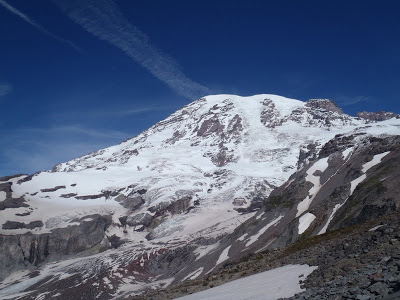 |
| Aurora Bivy, kept me warm on Mt Rainier! |
Outdoor Research Aurora Bivy
So... I'm not paid to say this, but this bivy sack has rocked my world ever since getting it in 2009. I got this bivy sack for the John Muir Trail as a desperate way to keep my pack weight down. Weighing in at 1 lb 7.5 oz, its got every ultralight tent beat! It kept me warm for 2 weeks on the John Muir Trail and worked well in many a Sierra thunderstorm. I loved it so much on that trip that I've seldom gone back to using tents. Since 2009, I've tested my bivy sack in almost every capacity and part of the country. Some notable trips I've been on have been with the bivy sack are:
- Mt Rainier ascent in early September 2010
- Mountaineering expedition in the Palisades, Sierra Nevada, Winter 2010 (temperature was close to 0 degrees and I slept outside with it!)
- Grand Canyon, November 2010, (rain tested!)
- Maine Island Trail, August 2010, July 2011 (Rain and thunderstorms)
- Utah National Parks Road Trip, Spring 2010 (rain and snow)
- Wheeler Peak, Nevada Winter Ascent, 2010 (winter temperatures)
- Winter climbing trips in Joshua Tree (winter temperatures)
- Presidential Traverse, New Hampshire, 2011 (rain tested)
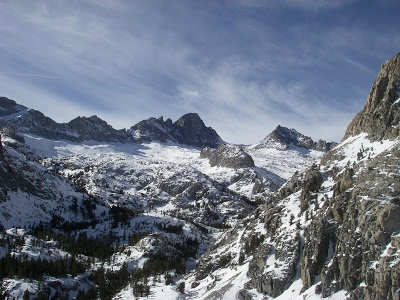 |
| Winter in the Sierras |
I've tried and tested this bivy sack and its become one of the most important parts of my gear repertoire. I bring it on almost every solo trip and mountaineering expedition.
Pros of the Aurora Bivy Sack:
1) Tent Replacement: When you're going on longer backpacking expeditions and kayaking expeditions, every ounce counts and you can't afford to be dragging around a big tent. Especially if you are fond of solo trips, I'd fully endorse it.
2) Emergency Shelter: Often when I'm going on solo day trips or trying to bag a summit in a day, I bring this along as an emergency shelter. I brought this on my ascents of Mt Hood and Mt Adams as well as trips across the desert in the winter.
3) +10-15 Degrees to your Sleeping Bag: This bivy sack really does add 15 degrees to your sleeping bag. I have a North Face Snowshoe sleeping bag that's rated 0 degrees and the bivy sack makes it a -10 degree bag. It a crude but effective way to increase the warmth of your sleeping bag without spending more $$$.
4) Low Profile Camping: Sometimes when your on the trail or on the road, you need to um... keep a low profile! This is the perfect color for those times!
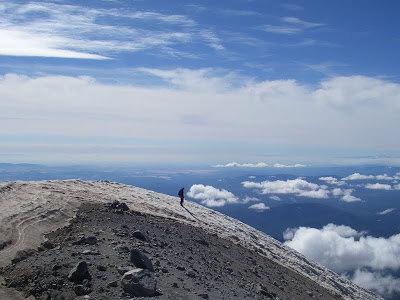 |
| Good emergency bivy on those one day ascents! |
Cons of the Aurora Bivy Sack:
1) Rain and Wet Snow: The Aurora has come in handy when it rains but I've noticed that my sleeping bag might be ever so slightly damp when I've endured a full night of constant rain. It still kept me warm and dry, but I'm not sure I would take it on an extended trip where steady rain is possible. Then again, nothing is truly waterproof.
2) Sleeping on Wet Snow: This is more of a problem with bivy sacks in general. When you sleep on wet snow, your heat can melt it and then freeze it to your bag
Realistically, if you're doing a trip through Minnesota or the Olympic Peninsula where it rains 9 days out of 10, you might want to consider bringing a pretty hardcore waterproof tent. In a pinch though, it works well!
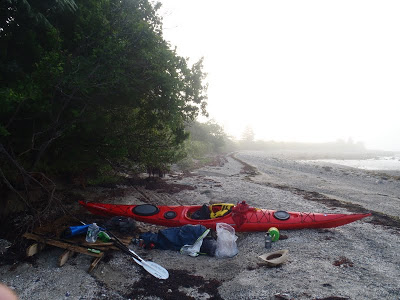 |
| Maine Island Trail bivy! |
Again, I was not paid to say any of that. I hope its a pretty good and objective view of the Aurora Bivy Sack.
Here is the website!








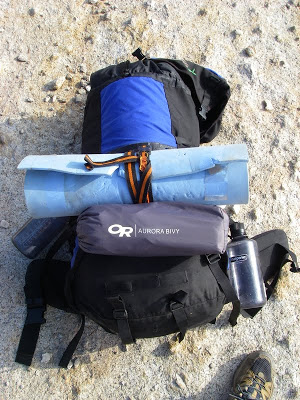

No Comments